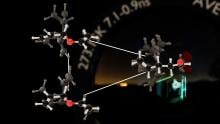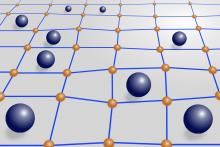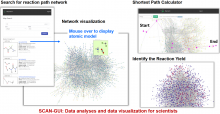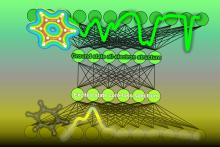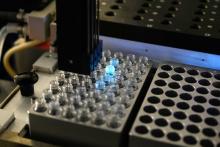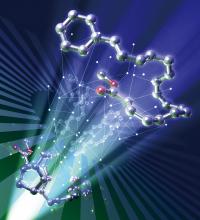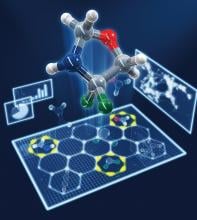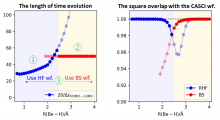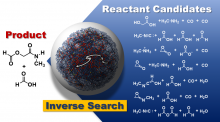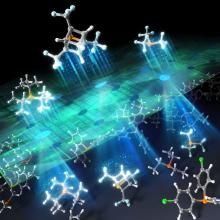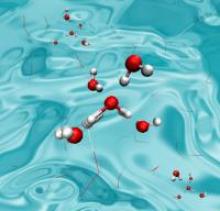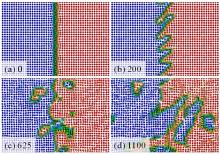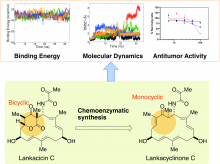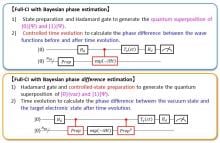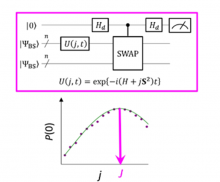Chemistry Computational chemistry
News
20 Jul 2023
Researchers from the Institute of Industrial Science, The University of Tokyo, provide physical insights into porous soft materials, which will facilitate the design of many energy, medical, and other technologies.
03 Jul 2023
A new online platform to explore computationally calculated chemical reaction pathways has been released, allowing for in-depth understanding and design of chemical reactions.
19 May 2023
Researchers at the Institute of Industrial Science, The University of Tokyo, use artificial intelligence to help interpret data generated by material science spectroscopy experiments, which can aid in the development of new drugs and organic conductors.
03 Feb 2023
Researchers used a chemical synthesis robot and computationally cost effective A.I. model to successfully predict and validate highly selective catalysts.
01 Dec 2022
Automated reaction path search method predicts accurate stereochemistry of pericyclic reactions using only target molecule structure.
08 Aug 2022
Reaction design framework proposed by computations leads to the discovery of a wealth of reactions, opening new paths for drug development.
02 Aug 2022
Osaka Metropolitan University researchers have clarified the first suitable computational conditions for Adiabatic State Preparation (ASP) executable on a quantum computer, a method that can improve the accuracy of calculating atomic and molecular wave functions.
ASP is thought to be one of the leading methods for efficiently preparing correlated wave functions of molecules with complex electronic structures, but the specific conditions required for the calculations have not been thoroughly investigated so far. This new research has clarified the computational conditions needed to use ASP, a major development for making quantum chemical calculations on a quantum computer practical for chemical or materials research.
06 Jun 2022
Researchers at the Institute of Industrial Science, The University of Tokyo studied the anomalous properties of amorphous solids, including glasses, using computer simulations, and found a common vibrational mechanism underlying them, which may help control the glass properties
25 Apr 2022
Researchers overcome computational limitations to predict the starting materials of multi-step reactions using only information about the target product molecule.
14 Mar 2022
Researchers aim to streamline the time- and resource-intensive process of screening ligands during catalyst design by using virtual ligands.
28 Feb 2022
Scientists developed a procedure to reproduce the double peak feature of x-ray emission spectroscopy (XES) spectra in liquid water.
16 Feb 2022
Through numerical simulations, a researcher details the discovery of a new isolated skyrmion with a half-integer topological quantum number in the ferromagnetic phase of the magnetic quantum fluid Bose-Einstein condensate (BEC). The new skyrmion is generated by applying a spin current to a magnetic domain wall and it has an eccentric (off-center) spin singularity inside it.
31 Jan 2022
Garden soil houses a variety of bacteria and their natural byproducts — including one that may help halt tumor growth. Lankacidins are molecules that can be isolated from Strepomyces rochei, a common bacterium in soil. In addition to antimicrobial properties, a type of lankacidins, called lankacidin C, can inhibit tumor activity in various cancer cell lines, including leukemia, melanoma, ovarian and breast cancers. Lankacidin C offers a potential foundation on which to design anticancer drugs, but its structure is complicated and difficult to manipulate, according to an international research group. The same group recently identified where antitumor activity is housed on the molecule and has now used that information to simplify lankacidin as a potential starting point to engineer treatments.
26 Nov 2021
In a continuing effort to improve upon previous work, a research team at the Graduate School of Science, Osaka City University, have applied their recently developed Bayesian phase difference estimation quantum algorithm to perform full configuration interaction (full-CI) calculations of atoms and molecules without simulating the time evolution of the wave function conditional on an ancillary qubit. Superior to conventional methods in terms of parallel execution of quantum gates during quantum computing, this new algorithm is expected to be much easier to implement in actual quantum computers.
02 Sep 2021
Researchers have developed a general quantum algorithm that can directly calculate the energy difference of an atom and molecule using a quantum computer. By avoiding the need to calculate the total molecular energies, the general algorithm is expected to be applied not only to quantum chemical calculations but also to various physical and mathematical problems, which are intractable with nowadays classical computers.
17 Mar 2021
Researchers improve their newly established quantum algorithm, bringing it to one-tenth the computational cost of Quantum Phase Estimation, and use it to directly calculate the vertical ionization energies of light atoms and molecules such as CO, O2, CN, F2, H2O, NH3 within 0.1 electron volts of precision.
18 Jan 2021
Researchers at Osaka City University use quantum superposition states and Bayesian inference to create a quantum algorithm, easily executable on quantum computers, that accurately and directly calculates energy differences between the electronic ground and excited spin states of molecular systems in polynomial time.
31 Dec 2019
A research team, affiliated with South Korea's Ulsan National Institute of Science and Technology (UNIST) has unveiled a novel algorithm that identifies optimal pairs for composing metal-organic frameworks (MOFs).
Events
Sorry, nothing coming up for this discipline
Researchers
Hira Khalid is an associate professor at the Department of Chemistry of Forman Christian College University, Lahore, Pakistan.
Giants in history
Sorry, nothing coming up for this discipline


